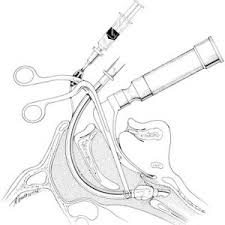Introduction:
Magill forceps, a staple tool in medical practice, play a crucial role in airway management, particularly during intubation procedures. Understanding the anatomy and functionality of Magill forceps is paramount for healthcare professionals to ensure safe and effective patient care. This comprehensive guide delves into the intricate details of Magill forceps, dissecting its parts, exploring their functions, and elucidating their clinical applications.
Anatomy of Magill Forceps:
Magill forceps consist of several essential components, each serving a specific function in airway management:
Handle:
The handle provides a grip for the user and houses the mechanisms for opening and closing the forceps.
Shaft:
The shaft extends from the handle to the working end and is designed to provide length and stability during manipulation.
Working End:
This is the distal portion of the forceps, comprising the jaws or tips responsible for grasping foreign bodies or guiding endotracheal tubes.
Parts and Functions:
Understanding the parts of Magill forceps is essential for utilizing them effectively in clinical practice:
Handle:
The handle of Magill forceps typically features finger rings or loops, allowing the user to grasp and manipulate the instrument comfortably. It may also incorporate a ratchet mechanism to facilitate locking of the forceps in the closed position.
Shaft:
The shaft of Magill forceps is slender and elongated, enabling precise maneuverability within the oral cavity and pharynx during intubation procedures.
Jaws:
The jaws of Magill forceps are curved and serrated, facilitating the grasping and manipulation of objects within the airway. They are designed to securely hold foreign bodies or guide endotracheal tubes during intubation.
Clinical Applications:
Magill forceps find widespread use across various medical specialties, including:
Anesthesiology:
Anesthesiologists utilize Magill forceps during endotracheal intubation procedures to guide the endotracheal tube through the oral cavity and into the trachea.
Emergency Medicine:
Emergency physicians rely on Magill forceps for the removal of foreign bodies obstructing the airway, such as coins or food particles.
Otolaryngology:
ENT specialists use Magill forceps during laryngoscopy procedures to manipulate the epiglottis and facilitate visualization of the larynx.
Critical Care:
Intensive care unit (ICU) nurses may use Magill forceps for airway clearance and suctioning in mechanically ventilated patients.
Conclusion:
In conclusion, Magill forceps are indispensable instruments in airway management, offering precision, versatility, and reliability in various clinical scenarios. Understanding the anatomy, parts, and functions of Magill forceps is essential for healthcare professionals to ensure safe and effective patient care during intubation procedures and airway management interventions

